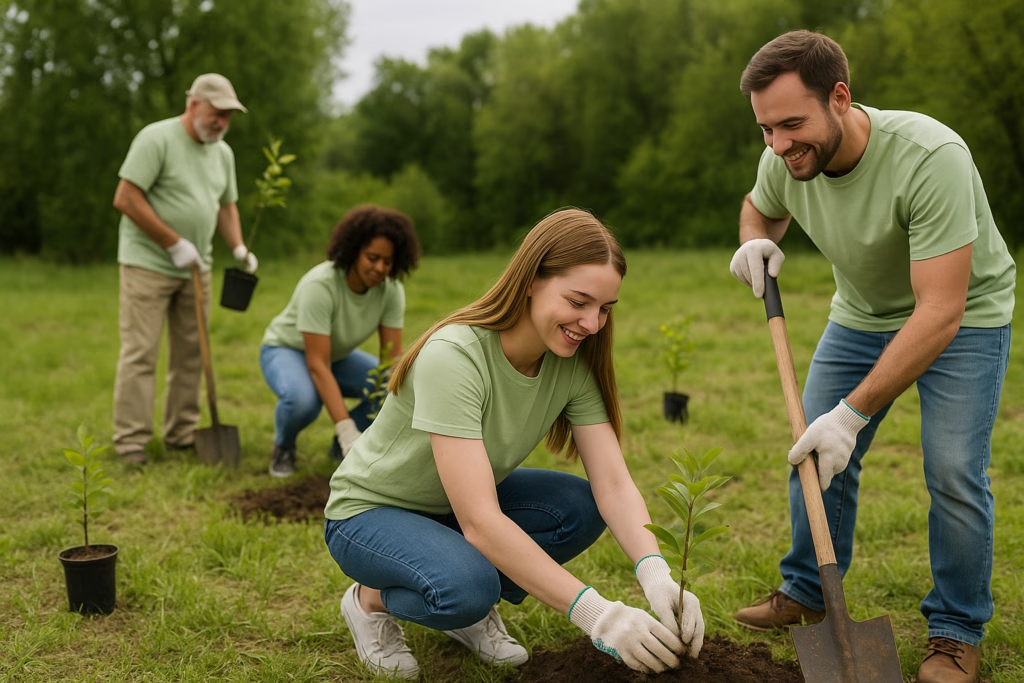In April 2025, the U.S. Department of Commerce significantly escalated its ongoing trade dispute with Canada, proposing to more than double tariffs on Canadian softwood lumber imports from 14.5% to 34.5%. This development threatens not only the affordability of housing across North America but also the economic stability of hundreds of Canadian communities, particularly those reliant on forestry.
The implications of such tariffs extend far beyond simple economic friction. They underscore vulnerabilities inherent in economies heavily dependent on natural resource extraction. Yet, amid this uncertainty, innovative conservation finance models, such as those championed by the Tree Legacy Society (TLS), could provide a sustainable economic lifeline, offering both resilience and environmental stewardship.
The Deepening Economic Strain
Rising tariffs sharply affect housing markets, particularly in the United States, where Canadian lumber is a key construction material. Industry analysts predict that the recent tariff increase could drive up average home-building costs by approximately $9,200, further intensifying existing affordability crises.
For Canadian communities, especially in British Columbia, the scenario is even more dire. Forestry provides vital employment and economic activity to approximately 300 communities, including many Indigenous groups. Higher tariffs could dramatically reduce lumber exports, resulting in significant job losses and economic downturns, creating ripple effects throughout these communities.
A New Approach: Conservation Finance
Facing these daunting challenges, conservation finance emerges as a powerful alternative to traditional resource-dependent economic models. Conservation finance mechanisms, like those employed by TLS, involve valuing and monetizing the ecosystem services provided by forests, thus creating sustainable revenue streams without resorting to intensive resource extraction.
An illustrative case is British Columbia’s Great Bear Rainforest, where conservation financing initiatives have not only protected extensive forest areas but also generated meaningful economic benefits. These initiatives have created over 1,200 jobs within First Nations communities, supported more than 100 Indigenous-owned businesses, and funneled approximately $63 million directly into local economies.
Transforming Economies and Communities
By transitioning toward conservation finance, forestry-dependent communities gain numerous strategic advantages. Economies traditionally vulnerable to market volatility and policy shocks like tariffs can become more diversified and resilient. This shift opens doors to new opportunities such as ecotourism, sustainable forest management, and specialized environmental services.
Additionally, conservation finance directly addresses global environmental concerns by enhancing biodiversity conservation and climate change mitigation. Healthy, sustainably managed forests act as carbon sinks, significantly contributing to global efforts to reduce greenhouse gases. For communities adopting these innovative financial mechanisms, environmental stewardship thus becomes a profitable and socially beneficial pursuit.
Implementing a Viable Conservation Model
Adopting conservation finance requires careful strategic planning. Communities must begin by thoroughly assessing and valuing the ecological services their forests provide, from carbon sequestration to water purification. Engaging local and Indigenous stakeholders ensures that projects reflect community priorities and cultural contexts, enhancing both the legitimacy and effectiveness of initiatives.
Funding these conservation efforts can be achieved through various innovative financial tools. Green bonds, conservation trust funds, and payments for ecosystem services offer viable financial frameworks that attract both private and public investment. Rigorous monitoring and transparent evaluation of environmental and economic outcomes further build investor confidence and community support.
Building a Resilient Future
The sharp increase in lumber tariffs is more than an economic hurdle; it’s a clarion call for transformative economic thinking. Conservation finance models like those pioneered by TLS demonstrate how communities can effectively navigate such shocks, building economic resilience while actively contributing to environmental sustainability. As the traditional forestry model faces mounting pressures, embracing conservation finance may not merely be prudent—it could prove essential for long-term community viability and prosperity.

Join the Conversation
At The Tree Legacy Society, we believe that good climate decisions start with good information. If you want to understand the policies, data, and people shaping BC’s forest future—join our newsletter. You’ll get original articles like this, plus curated updates on legislation, community campaigns, and ways to take action.
👉 Subscribe below to be part of the conversation and protect what truly matters—forever.
Sign up to receive our newsletter
Plant-Based BBQ Recipes: Sizzle Sustainably This Summer
Summer BBQs are synonymous with joy, laughter, and sizzling grills—but did you…
7 Powerful Benefits of Solar Energy at Home That Save You Money
In a world of rising electricity bills and climate concerns, solar energy…
Climate Change, Social Justice, and the Powerful Lessons of May 1st
When we talk about climate change and social justice, we are not…
Empower Your Climate Action: Top Climate Online Courses for Lifelong Learners
If you’re a lifelong learner looking for ways to turn your passion…
7 Inspiring Children’s Books About Nature to Spark a Love for Earth
Building a strong bond between children and nature starts with the stories…
7 Inspiring Arbor Day Tree-Planting Events Near You to Join This Spring
Ready to Get Your Hands Dirty? Join One of These Arbor Day…





